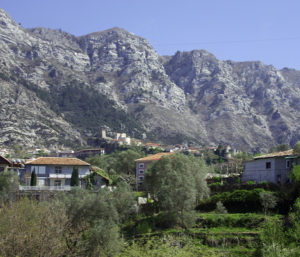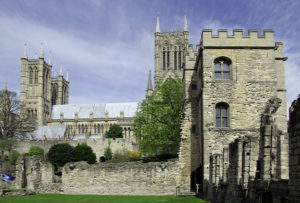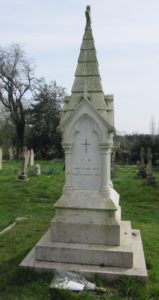St. Margaret of Antioch, East Wellow, is the burial place of Florence Nightingale and her local church.
We had spent an overnight stay at the wonderful Woodlands Lodge Hotel in the New Forest and on our journey back home, decided to call in at this countryside church and have a look at some of the photographs and artefacts inside, as well as seeing her resting place.
It was with some difficulty that we finally managed to find the location at East Wellow after having to make a stop at The Red Rover pub for directions. We had to turn off the A36 at Whinwhistle Road, go a mile and a half further down, then take a left turn into Hackleys Lane. After another three quarters of a mile down a narrow country lane, we finally arrived.
The church is still a lively centre of worship and many people are drawn here to visit because of its connection with Florence Nightingale. It has a feeling of peaceful tranquillity as you approach and from the lych-gate there is a view over the Sherfield English stream and Hampshire countryside.
People wonder why the church is so far from the village. This is because Wellow, with its hamlets of Embley and Canada, is very scattered, having different groups of houses and businesses built at different times throughout history.
Holding about 100 people, St Margaret’s Church is a flint, stone church which was consecrated in 1215 and stands on the site of an earlier building. Archaeological investigations found the remains of massive flint and chalk foundations with large post-holes, indicating, a yet, earlier building.
The nave of the present church was built in the early thirteenth century and the chancel later in the same century. The south aisle was added to in the fifteenth century. In 1999 the church was re-roofed with hand-made Devon tiles.
The exterior of the church shows changes of style of building as well as signs of necessary repairs over the centuries. Near the eastern end of the wall of the nave is an old sundial of the mass scratch-dial type. It is hard to find, but look for a slab of roughly dressed stone inset in the flints, with a central indentation into which the gnomon was once fitted, around 1.46m from the ground.
The heavy door, with its herringbone patterned iron banding has its original lock and huge key. Just inside the church, in the south wall, is a holy water stoop. (modern replica of the original) The niche in which this stands and its surrounds bear the remains of some great wall paintings. Paintings were discovered, hidden under layers of whitewash in 1891. Much of the work is thought to be from the mid thirteenth century though some are also thought to be both earlier and later. On the north wall is a large figure of St Christopher carrying the infant Jesus and with an eel and a spear in his right hand. On another wall is a fragment representing the killing of Thomas Becket.
Hassocks make a notable contribution to the colour in the church. The roof over the nave is constructed of rough-hewn timbers possibly from the late 15th century.
Towards the western end of the nave is a wooden bell cote, partly supported by the roof and three large posts. Three bells are hung, bearing names. This bell cote mostly obscures the remains of an earlier stone bell cote of the thirteenth century. Two dormer windows in the roof on the south side of the nave were inserted to let in light and air to a gallery, which was once in the western end, but removed in 1860.
The chancel roof is lower than that of the nave roof, with higher eaves, allowing taller windows. On one of the cross beams is hung an ancient musket. The owner accidentally killed a maid servant with it and, as an instrument of death, it was forfeited to the Crown.
The carved oak altar table and communion rails are seventeenth century, and the choir pews made from Jacobean oak.
The Nightingale family burial site is close to the family estate of Embley Park. In the churchyard is a four sided, white marble monument with inscriptions on each side for the four family members.
Inside the church is a good deal of Florence Nightingale memorabilia. At the west end there are screen panels displaying various items relating to Florence. In the south aisle, a window sill is given over to photographs of her, along with a wreath. There is also a memorial tablet set into the south wall. Resting in one of the windows was the Scutari Cross, made of bullets from the Crimea, and beside it a framed text which was hanging in Florence Nightingale’s bedroom when she died. The cross was stolen in 1991 and is replaced by a fibre glass replica.
If you are in the area, a visit to St Margaret’s Church and the resting place of Florence Nightingale, is worth considering.










